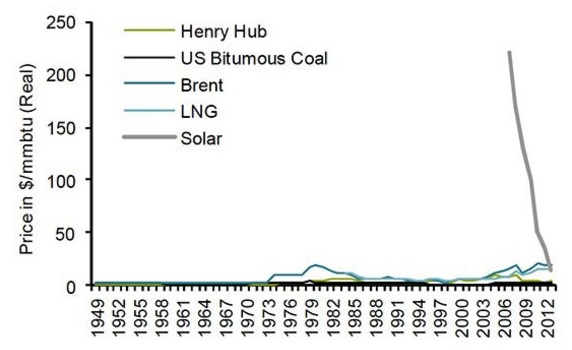A PV-Buzz Special Story:
Recent estimates from IEA (International Energy Agency) project that solar energy will be the world’s primary source of energy by 2050 with solar photovoltaic (PV) systems producing about 16%, and solar thermal electricity (STE) – from “concentrating” solar power plants – producing another 11% of the world’s electricity.
The continues decline of equipment cost and effective methods of construction of these systems are credited for this very positive projection, added the IEA.
This news is welcome, but the thought of solar growing that fast in the near future may be difficult to believe looking at the fact that it currently represents less than 1% of the energy market.
However, a new Deutsche Bank report published Oct. 26, 2014 suggests that this shift will be on track. The report states that solar has already reached grid parity in 10 states that are responsible for 90% of U.S. solar electricity production, keeping it on track to be as cheap or cheaper than average electricity-bill prices in 47 U.S. states by the year 2016.
How about that?
“The rapid cost decrease of photovoltaic modules and systems in the last few years has opened new perspectives for using solar energy as a major source of electricity in the coming years and decades,” IEA Executive Director Maria van der Hoeven said in a statement to Reuters.
The growth in solar technology is also a strong point that backs this projected report–since its an idea that evolves or is continuously improved, the thinking is that it will surpass fossil fuels which will one day become exhausted.
Like all technology, the technology to harness electricity from the sun will continue to become cheaper as it is developed and perfected.
An analyst at Sanford Bernstein, coins the term–Terrordome–to describe the staggering price relationship between solar and fossil fuels (Bloomberg).

The Terradome analogy coined by Michael Park, an analyst at Sanford Bernstein (EIA, CIA, World Bank)
We dare to believe that solar power is unlike most other energy resources–limitless in supply. This limitless supply of power, could actually cause energy prices to drop so low that anyone could one-day afford it.















Comments